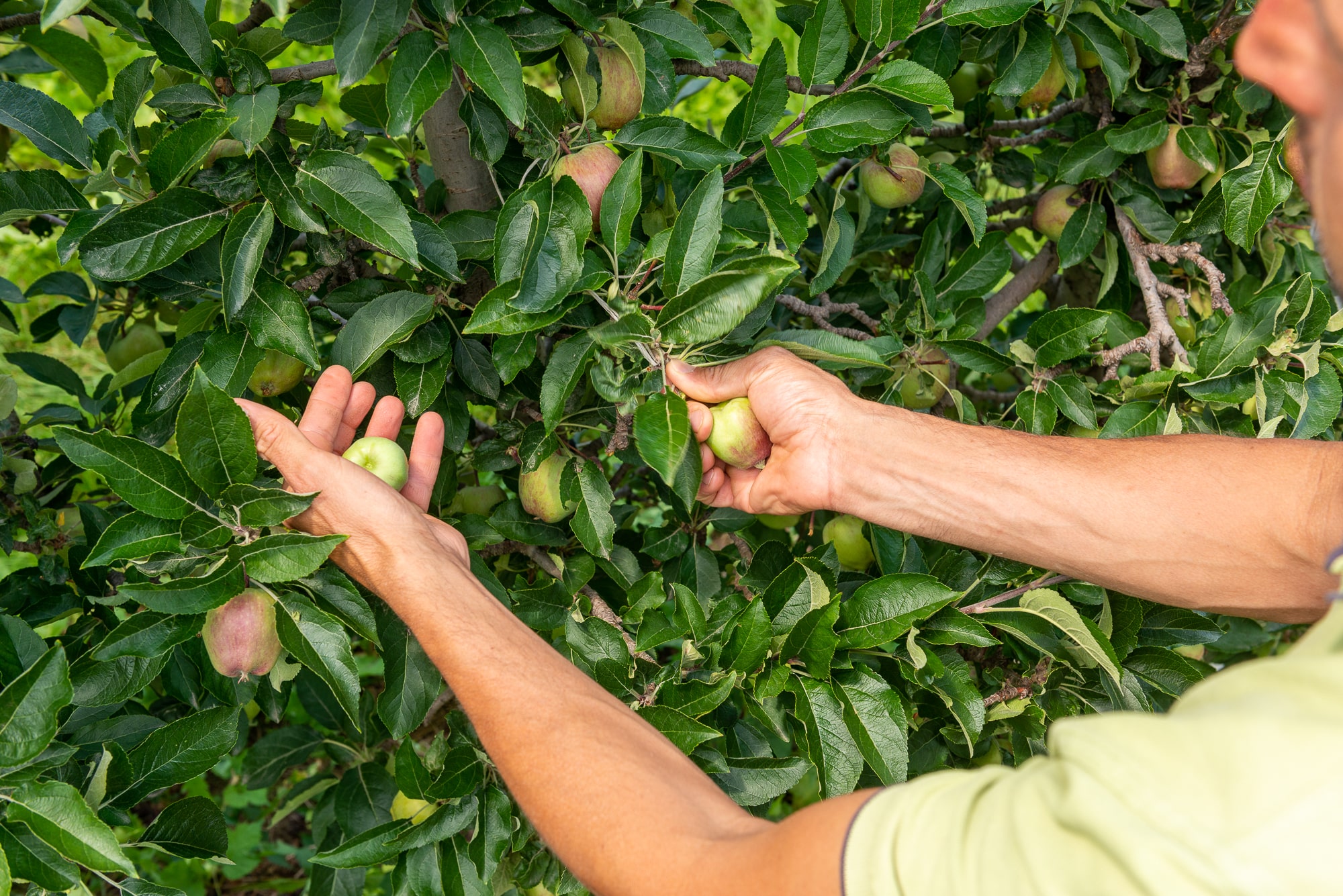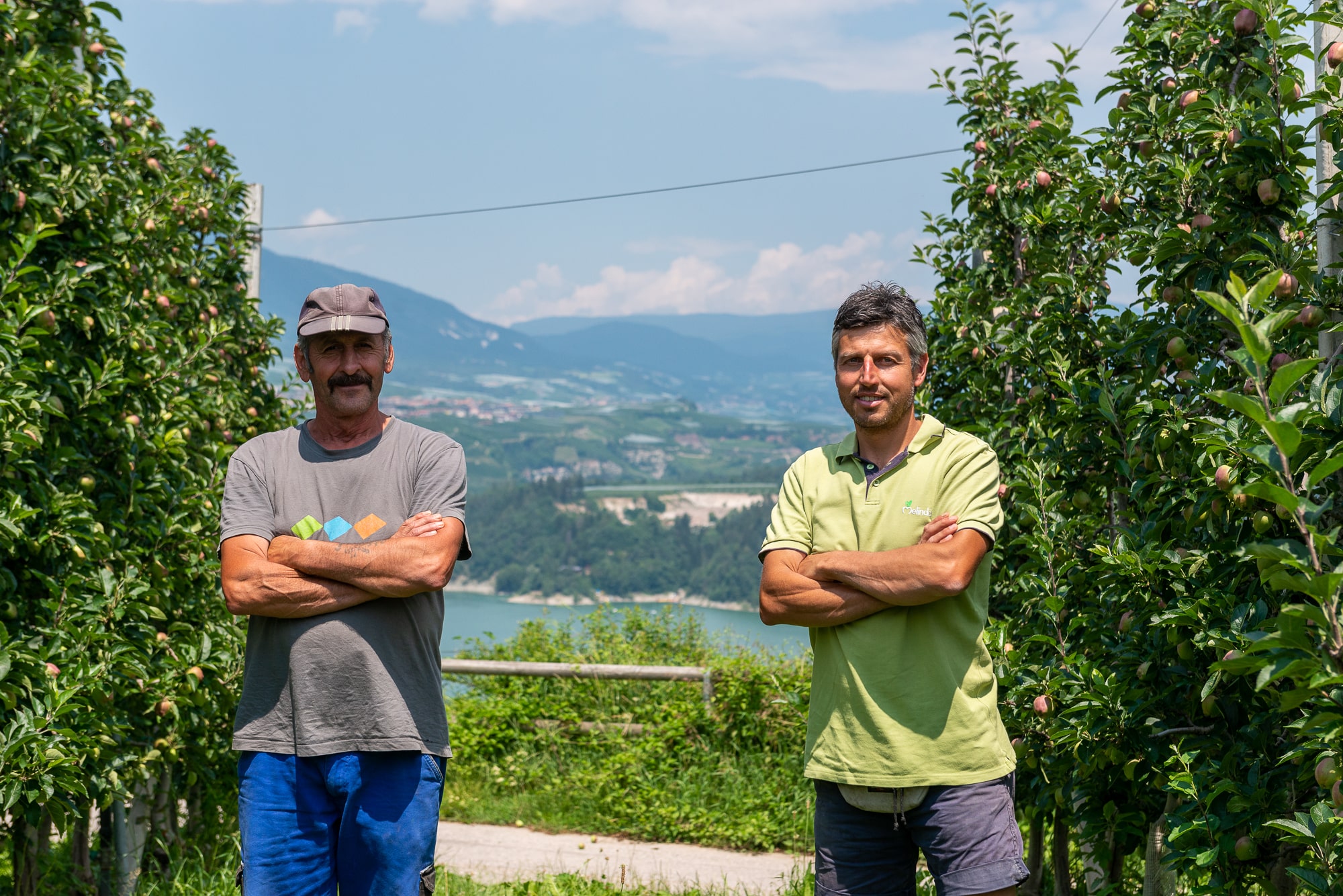We never stop working here in Val di Non. You have already become familiar with our fascinating fruits’ harvest: perfect apples picked up by the hands of our farmers. To them the worth to bring so beautiful and genuine fruits on your table.
But there is so much more behind the visible final outcome. There is a year-long hard work: pruning, supervision, manual thinning of the fruitlets, fertilization, harvest and plant renovation activities. And then you start again, in a never-ending cycle of passion, dedication and sacrifice.
Right in this moment, we are in the middle of the manual thinning. What does this method involve? We have asked this question to Giovanni Menapace, one of our expert farmers. Here is his story!
Interview to Giovanni: manual thinning’s operating instructions!
Today we are going to unveil for you all of the secrets of the manual thinning. Mr. Giovanni, a real expert, has been interviewed in order to make you discover many curiosities.
Here is our Q&A:
- Hello Giovanni. Today we are talking about the manual thinning, a still little-known practice. How does it work?
When we are talking about apple trees, one of the key operations for obtaining excellent fruits is surely the manual thinning. It is necessary for getting more beautiful apples and for giving the plant the perfect vegetative-production balance. An apple tree cannot produce more than 15-18 kg of fruits normally, or the quality of the product would suffer. The thinning practice is done by hand and lasts about 30-40 days, a period in which all the excess apples have to be removed from the plant, in order not to disperse its energy and to obtain bigger dimensions for the remaining fruits.

-
- Which is the best time to thin the apple trees out?
The best time to thin apples out starts normally towards June and ends around the middle of July. The more you let the fruits grow, the more the apple tree wastes its resources to feed it. This is the reason why you should rapidly select the fruitlets which have to be removed, so that the others can grow better. It is a hard work, which requires between 8 and 9 hours of work every day (from Monday to Friday).
- Which is the secret for a perfect thinning? Tell us your tricks!
Even though each plant is different from the other, you always have to start thinning them from the base. You need to observe the quantity of the fruits on the tree and then, with an expert eye, you have to start removing the excess apples. In order to do this, you have to pinch the stalk between thumb and forefinger, and then remove the fruit with the forefinger, leaving the stalk on the plant. And this is because the apples generally grow in clusters of 2 to 3, and by removing the stalk you could ruin the fruits which remain on the tree. I personally advice to maintain from 80 to 100 apples per tree.

- Chi ti dà una mano nel lavoro in campagna?
- Who helps you working in the fields?
Mine is a family business: principally, it is my father and me who work on the fields, but the external workers help us a lot. We are used nowadays to hear taking about the exploitation of foreign workers: it could sound obvious, but it is not our case! For instance, I can tell you the story of Pavel, who has worked with us since 1998, with almost all of his family. Beyond the working activity in the fields, we have established a genuine friendship.

Can you figure out now why Melinda apples are so good? It is thanks to farmers as Giovanni, who take care of them every day, working in the fields in Val di Non.
